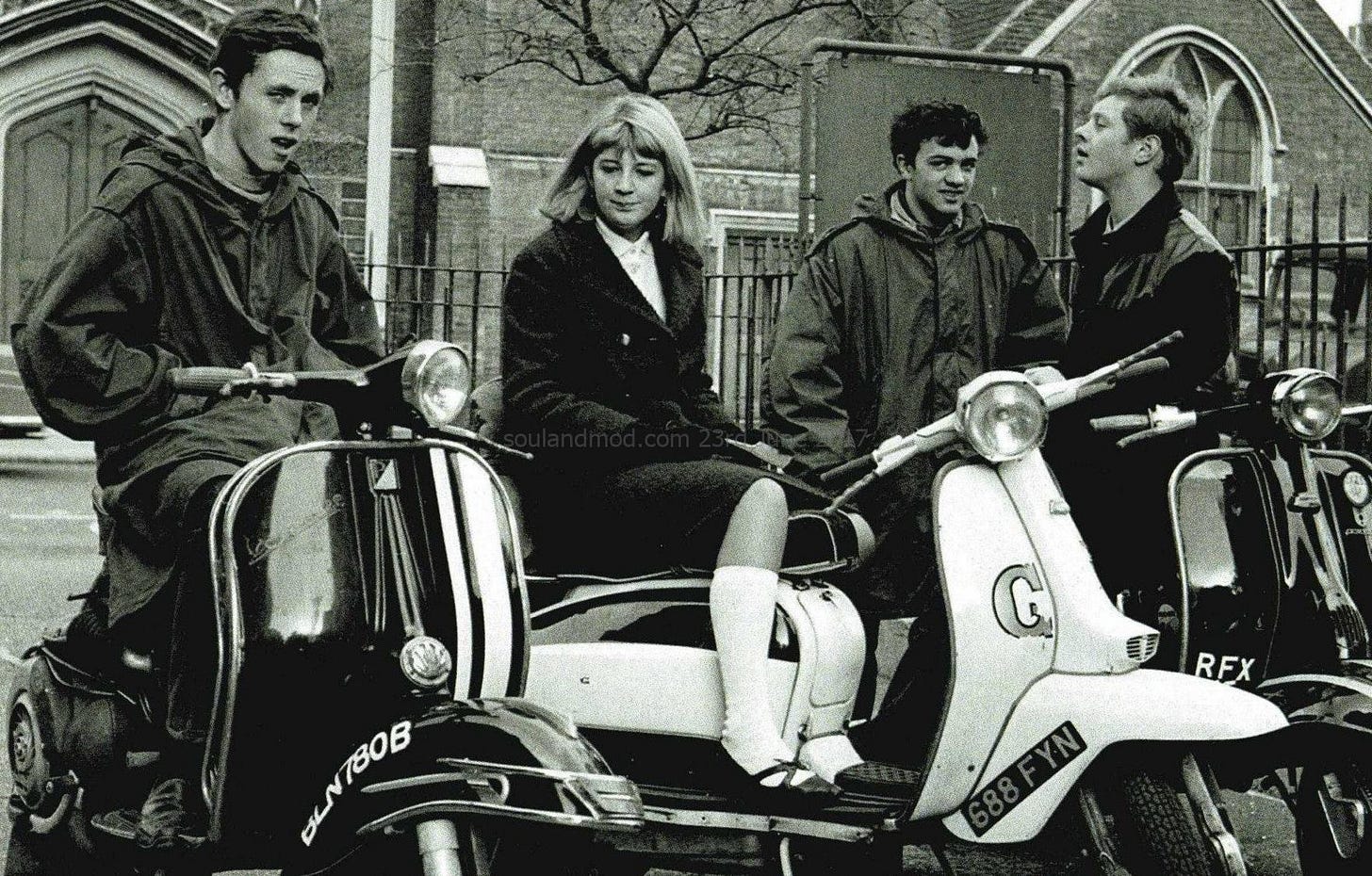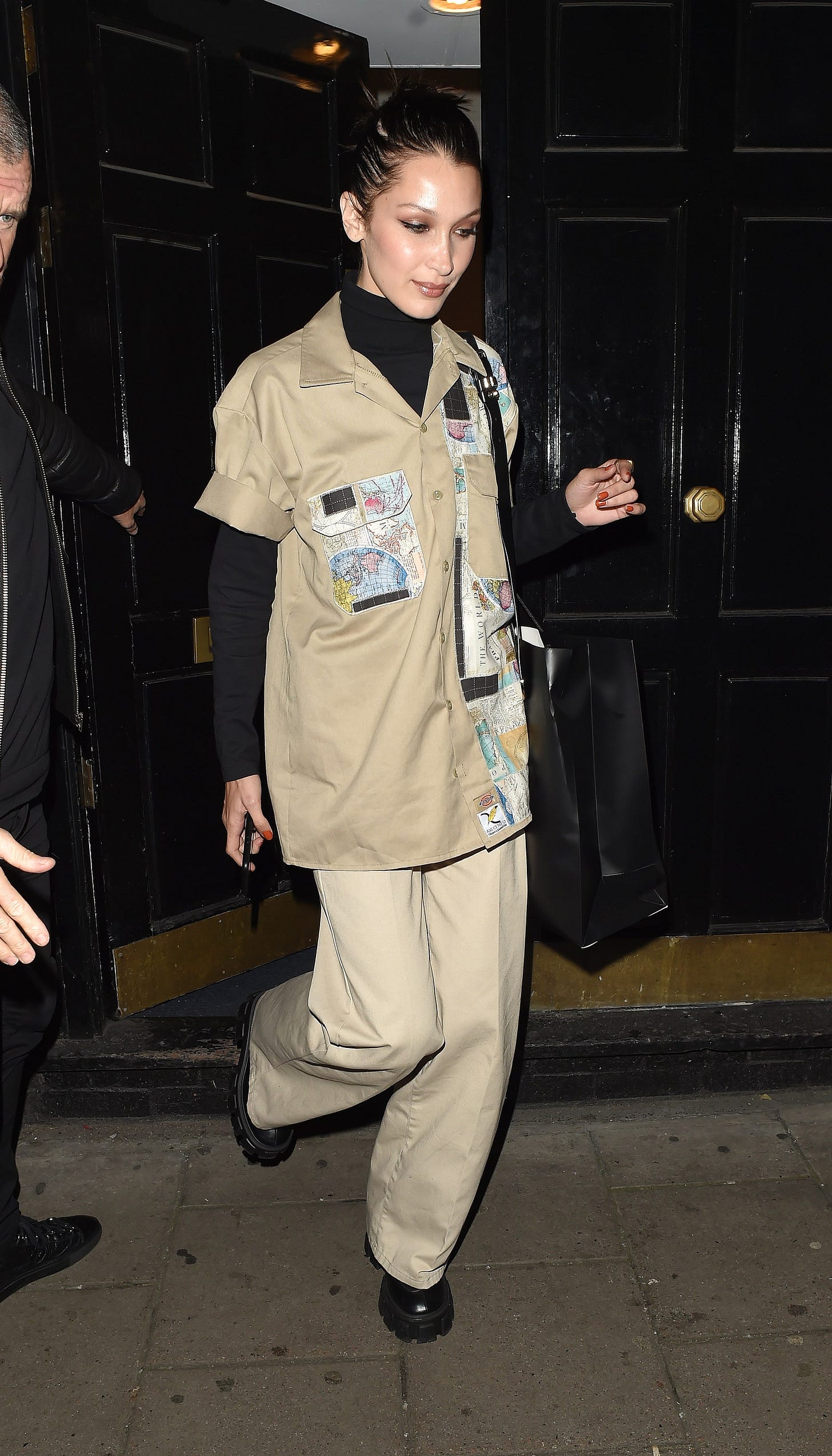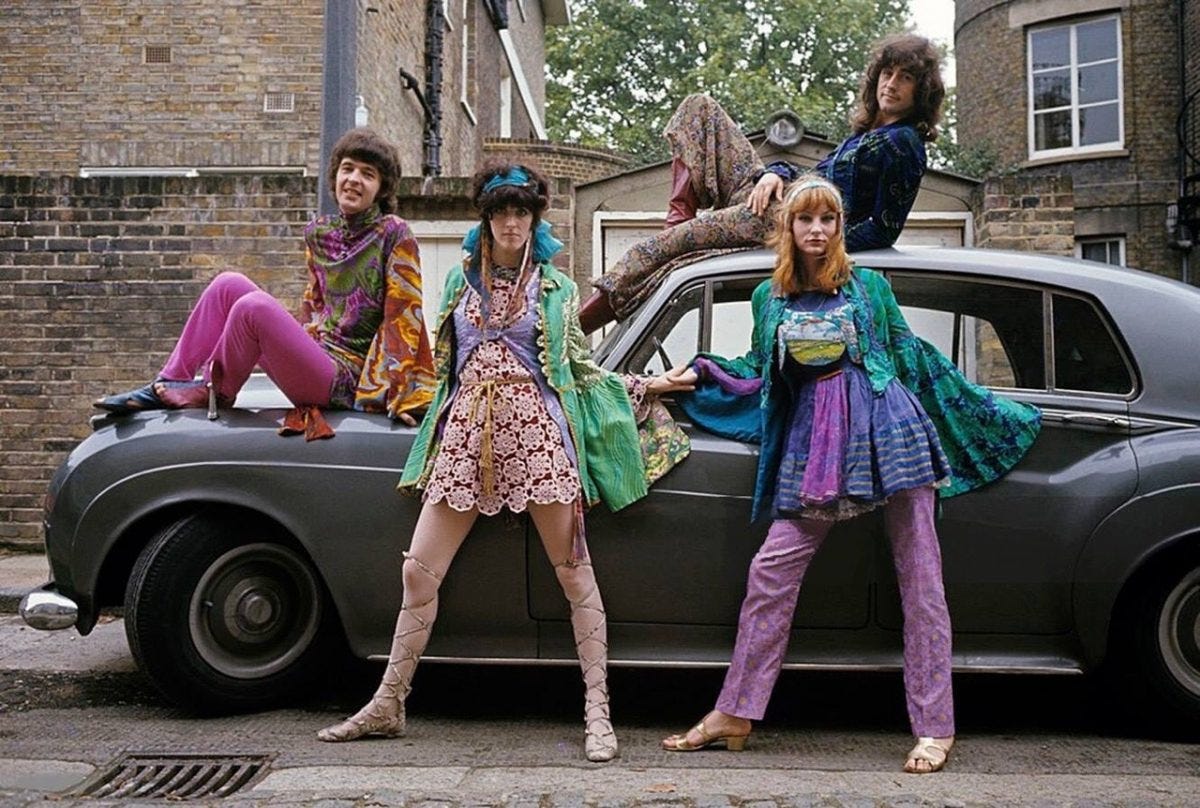Rebel With a Wardrobe
Mods, Skinheads, and Hippies walked so influencers, punk revivalists, and fast fashion could run and gentrify their rebellion.
Every generation has their way of rebellion. Sticking it to The Man. In early to mid 2000s, that might’ve looked like an indie sleaze outfit or some random dock worker fit but in 1960s Britain—rebellious fashion reflected a fight against capitalism, class struggle, British imperialism, and the changing face of immigration in the UK. The counterculture of the ‘60s wrote the blueprint, and we’re just living (and working it out) in the remix.
Hot Girl & Soft Boy Aesthetic: The Mod Revolution
Way before the “soft boy” look and the obsession with minimalist, curated cool, there were the Mods—young, stylish Brits who wanted to distance themselves from their stodgy (I feel like this is a word that can only be said in a British accent), old-school masculinity and femininity of their parents’ generation.
Usually donning tailored suits, miniskirts, Chelsea boots (yes, the same ones you’d see at a random lounge in Fordham at 1 AM), and androgynous silhouettes, Mods were refined but rebellious.
Mind you, around this time, there were parts of Europe that were just getting themselves back together physically and economically after the destruction of WWII. Young people who rationed during the war were experiencing some affluence due to working part time jobs and spending mommy & daddy’s money. They had the privilege to be anti-establishment and yet extremely consumerist.
Mods embraced capitalism, spending their newfound disposable income on designer clothes and Italian scooters, but at the same time rejected British traditional values. This is very similar to today’s influencers, who denounce fast fashion while promoting “sustainable” designer brands that costs a month’s rent.
Where is the medium between affordability, size inclusivity, fashionable pieces, and sustainability? If you know, please DM me and do not recommend Torrid.
We see modern versions of Mod rebellion in shows like The Queen’s Gambit (Beth Harmon’s meticulously chic wardrobe reflected her defiance. Don’t get me started on the 350 hair color!)
Skinheads: The Working Class’s War on The Establishment (and Themselves)
When you read the word “skinhead” I can guess the image you’re thinking of. I, too, saw American History X. The Skinheads that’s being referred to are not connected to the KKK. At least not at the point in history I’m describing. Just a lil’ disclaimer.
While Mods were sleek and stylish, Skinheads stripped away the glam and went full working class-pride—buzz cuts, Doc Martens, rolled up jeans, and heavy workwear.
They were angry, disillusioned, and united in their class identity, rejecting the consumerist escapism of the Mods in favor of a raw, no frills style that was the look of the “proletariat”. This aesthetic—anti-fashion, tough, and utilitarian—feels reeeal similar to today’s rise in workwear and “blokecore”, where brands like Dickies, once worn by factory workers, are now hyped streetwear staples.
But Skinhead culture also became a case study in how economic anxiety can be weaponized. Initially influenced by Jamaican immigrant culture, early Skinheads embraces ska, reggae, and Caribbean Slang. If you have ever heard the Brummie or Manchester accent, you have a pretty good idea of what a Skinhead in ‘60s Britain sounded like. However, as the British economy worsened, some factions turned towards xenophobia and nationalism, blaming immigrants for job losses (sounds familiar?).
The same working-class radicalization is visible today—whether it’s the far far right trying to claim blue-collar identity of fashion movements that start as counterculture but get co-opted by reactionary forces.
Yes. That is Roseanne. That Roseanne. In a braided wig. Next to…a rapper?
Shows like This Is England and Green Street Hooligans depict this Skinhead paradox: a movement that started as a celebration of working-class identity but was hijacked by racist ideologies.
The Beginning of Cultural Appropriation in Fashion
Ok so, let’s recap a little:
Mods - stylish consumers
Skinheads - militant workers
Moving on, we have hippies. Hippies were the *free spirits* who rejected both capitalism and tradition in favor of psychedelic self-expression, Eastern spirituality, and countercultural idealism.
Flowing tunics, embroidered fabrics, and “ethnic” jewelry weren’t just about aesthetics—they symbolized a break from the rigidity of British imperialism. At this point, I’ve mentioned how rigid and traditional Britain was several times. Hint. Hint.
Much like the crowd at Coachella wearing mass-produced boho-chic looks found on a shelf at Urban Outfitters, Hippie fashion often borrowed from non-Western cultures in ways that were more aesthetic than political. Think the black square on influencer IG pages in “solidarity” that they kept up for 72 hours because it didn’t fit with their aesthetic.
This contradiction—rejecting capitalism while still engaging in exoticized consumerism—mirrors today’s “wellness” industry. Yoga retreats. Yoni steams. Sage burns. Crystal gua shas. All marketed as countercultural but function as bullion-dollar industries.
For my old fogies of the internet out there, think about how early 2010 Tumblr (and Snapchat) obsessed over flower crowns and “tribal” prints. Or how festival culture turned South Asian bindi’s and Native American headdresses without addressing its complicated history, while music festivals continue to self “authentic” bohemian fashion that’s anything but.
How 1960s Fashion Still Shapes Today’s Political & Cultural Movements
The tensions of 1960s British counterculture—capitalism vs. rebellion, working-class identity vs. nationalism, cultural appreciations vs. appropriation—are still happening today. The ways we still dress reflect where we stand (maybe not we but people out there, ok?).
Streetwear, once a symbol of Black and working-class communities, is now luxury fashion. (Think Supreme, Louis Vuitton collabs, and A$AP Rocky fronting Gucci campaigns.)
Thrifted, DIY fashion is marketed as a “trend,” even though working-class people have done it out of necessity for decades. Message to people out there: stop buying clothes from thrift stores and re-selling them at way higher prices on Depop! There is a special place in Hell for you…
“Anti-fashion” movements, from normcore to blokecore (can you tell that I consume media on TikTok?), keep cycling back, proving that rejecting the system often leads right back to it.
Final Thoughts. Yes, I’m Almost Done.
Looking back at 1960s counterculture, it’s easy to romanticize the fashion as pure rebellion. But history tells us that no aesthetic is immune to being sold back to the very people it was meant to liberate.
So the next time you throw on a vintage blazer, lace up your Doc Martens, or buy a flowy “bohemian” dress, ask yourself:
Am I making a statement, or am I just participating in another capitalist rebrand of rebellion?
How do I acknowledge the cultural and political history behind what I wear?
Who actually benefits from my fashion choices?
I know you won’t really ask yourselves these questions but do it for me, ok?
Last thing - what’s an article about 1960s British counterculture without an Austin Powers clip?
HIT IT!
Stay groovy!
—Êmia











